Trends in Female and Male Migration in Thailand
Revision for “Trends in Female and Male Migration in Thailand” created on March 2, 2019 @ 07:40:02
|
Trends in Female and Male Migration in Thailand
|
|
<p>
 </p> </p><div id="toc"> <h2>Table of Contents</h2> <ul> <li class="toclevel-1"><a href="#w_introduction"><span class="tocnumber">1</span> <span class="toctext">Introduction</span></a></li> <li class="toclevel-1"><a href="#w_international-migration-situation-in-thailand"><span class="tocnumber">2</span> <span class="toctext">International Migration Situation in Thailand</span></a></li> <li class="toclevel-1"><a href="#w_international-immigrants-in-thailand"><span class="tocnumber">3</span> <span class="toctext">International immigrants in Thailand</span></a></li> <li class="toclevel-1"><a href="#w_conclusion"><span class="tocnumber">4</span> <span class="toctext">Conclusion</span></a></li> <li class="toclevel-1"><a href="#w_see-also"><span class="tocnumber">5</span> <span class="toctext">See also</span></a></li> <li class="toclevel-1"><a href="#w_references"><span class="tocnumber">6</span> <span class="toctext">References</span></a></li> <li class="toclevel-1"><a href="#w_group-4"><span class="tocnumber">7</span> <span class="toctext">Group 4</span></a></li> </ul> </div> <h2 id="w_introduction">Introduction</h2> <p><a href="http://obatkutilkelaminpria.com/2019/02/26/ngeri-apa-sih-kutil-kelamin-serta-penyebabnya/">Migration</a> <a href="http://obatkutilkelaminpria.com/2019/02/27/ketahuilah-inilah-cara-mengobati-kutil-kelamin-secara-permanen-tanpa-rasa-sakit/">is</a> <a href="http://obatkutilkelaminpria.com/2019/02/27/kutil-kelamin-pria-inilah-ciri-serta-gejalanya-yang-perlu-di-ketahui/">the</a> <a href="http://obatkutilkelaminpria.com/2019/02/27/luar-biasa-viral-kutil-kelamin-wanita-hilang-dengan-obat-ini/">movement</a> of people across a specified boundary for the purpose of establishing a new or semi-permanent residence. Normally, they move to another country or region to better their material or social conditions and improve the prospect for themselves or their family. Migration in "Gender consists of two trends: Immigration and internal migration.</p> <ul> <li>Immigration is when foreign workers immigrate into one country from another</li> <li>Internal migration is when citizens of one country migrate to urban or industrial cities.</li> </ul> <p>More than 87 percent of external migrants originate from "Gender , followed by 23% from "Gender and a small number also come from "Gender and other countries. These immigrants usually work in the agriculture and construction sectors across the country. Most come to Thailand because the GDP per capita in these countries is much lower than in Thailand, and more than one-third of the population lives below the poverty line. http://www.nationmaster.com/red/country/th-thailand/imm-immigration&all=1 The World Bank came out with a revised figure of $1.25 at <a href="https://education.microsoft.com/Story/Lesson?token=IJ0QG">2005</a> purchasing-power parity (PPP). The shift of Thai economy from an agricultural to an industrial orientation has increased employment opportunities in the manufacturing and service sectors. As a result, there has been a dramatic decrease in the number of workers in the agricultural sector. It invoked a movement of internal migration from the agricultural sector to the non-agricultural sector.</p> <h2 id="w_international-migration-situation-in-thailand">International Migration Situation in Thailand</h2> <p><a href="http://obatkutilkelaminpria.com/">As</a> <a href="http://obatkutilkelaminpria.com/2019/03/01/awas-penipuan-rekening-resmi-de-nature-a-n-ragil-pangesti/">mentioned</a> <a href="http://obatkutilkelaminpria.com/2019/02/28/akhirnya-telah-di-temukan-cara-menghilangkan-kutil-kelamin-tanpa-harus-operasi/">in</a> <a href="http://obatkutilkelaminpria.com/2019/02/28/info-terbaru-gambar-kutil-kelamin-no-3-yang-paling-mengerikan/">the</a> <a href="http://obatkutilkelaminpria.com/2019/02/28/wajib-tahu-inilah-penyebab-kutil-kelamin-pada-pria-maupun-wanita/">Introduction</a>, internal migration is defined as the movement within one country from one area to another. On example of this is the movement from northeast Thailand to Bangkok and the five peripheral provinces (Nonthaburi, Nakorn phathom, Phatum Thani, Samut prakarn and Samut sakorn) in order to find a better job. http://www.ghs-mh.de/migration/projects/define/define.htm Thailand’s national development plans are helping to influence migration from rural areas to urban sites. Thailand is still a developing country and is slowly trying to transform its economic structure from a primarily agricultural country to a primarily industrial country. Thai people are mostly agricultural workers and tend to move from rural areas to urban ones to find a better salary and improve overall well-being. http://www.un.or.th/documents/tmr-2011.pdf From table 9.1, we can see that the percentage of male migrants was higher than female migrants from 1997 to 2009. The migration trends of male and female migrants seem to increase at the same rate from <a href="https://3dwarehouse.sketchup.com/collection/9f3ad4cb-3f68-4e06-a14e-47e0f6aaaccc/Cara-Mengobati-Benjolan-Ambeien-Tanpa-Operasi-Dengan-Bawang-Putih">1997</a> to <a href="https://3dwarehouse.sketchup.com/collection/536c8bc2-cbd5-4bcc-ba95-2647019e2600/AMPUH-Obat-Ambeien-100-HerbalAlami-Paling-Mujarab-Sembuh-Tanpa-Obat-Kimia">2002</a>. However, after <a href="https://education.microsoft.com/Story/Lesson?token=Ws1X3">2004</a>, we can see that the number of migrants starts to slowly decrease each year. 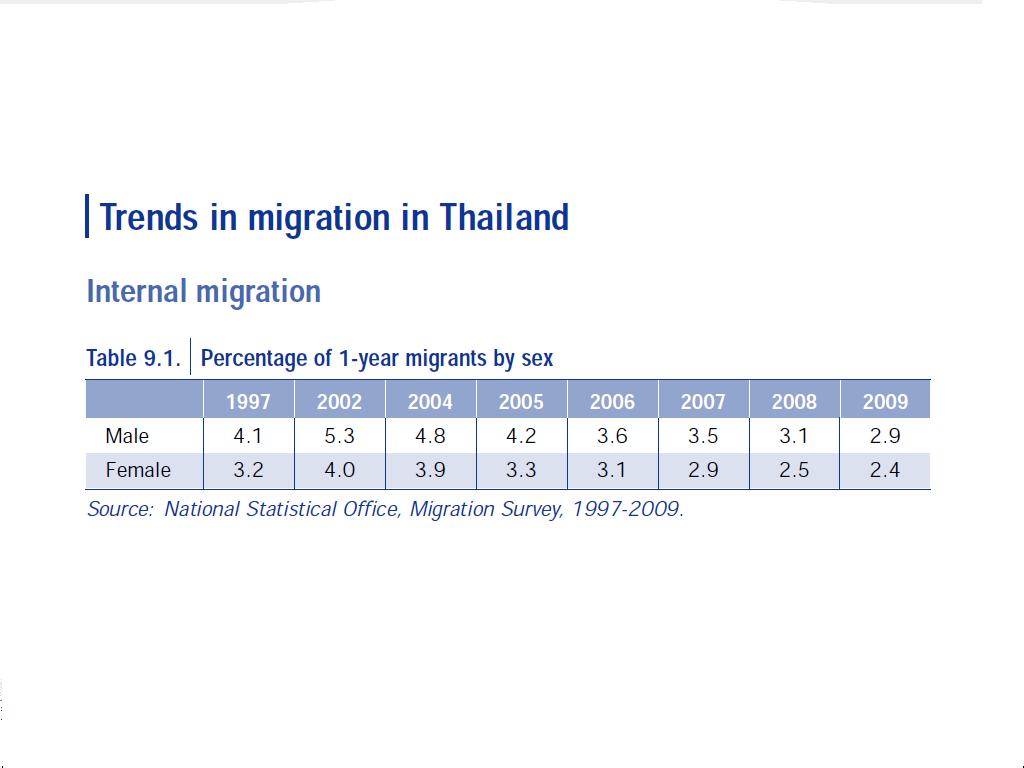 From figure 9.1, even though Thailand has a higher female population than male population, https://www.cia.gov/library/publications/the-world-factbook/geos/th.html we can see that the yearly percentage of male internal migration is greater than female internal migration from 2005 to 2009. The reason that more men migrate to urban areas than women might be due to the nature of the available jobs. There were most likely more opportunities for non-skilled men labour in the three ‘D jobs’ (dangerous, dirty and difficult jobs) because many employers willing to hire men to work in three ‘D jobs’ such as in construction and fishery, more than women. From figure 9.1, even though Thailand has a higher female population than male population, https://www.cia.gov/library/publications/the-world-factbook/geos/th.html we can see that the yearly percentage of male internal migration is greater than female internal migration from 2005 to 2009. The reason that more men migrate to urban areas than women might be due to the nature of the available jobs. There were most likely more opportunities for non-skilled men labour in the three ‘D jobs’ (dangerous, dirty and difficult jobs) because many employers willing to hire men to work in three ‘D jobs’ such as in construction and fishery, more than women. 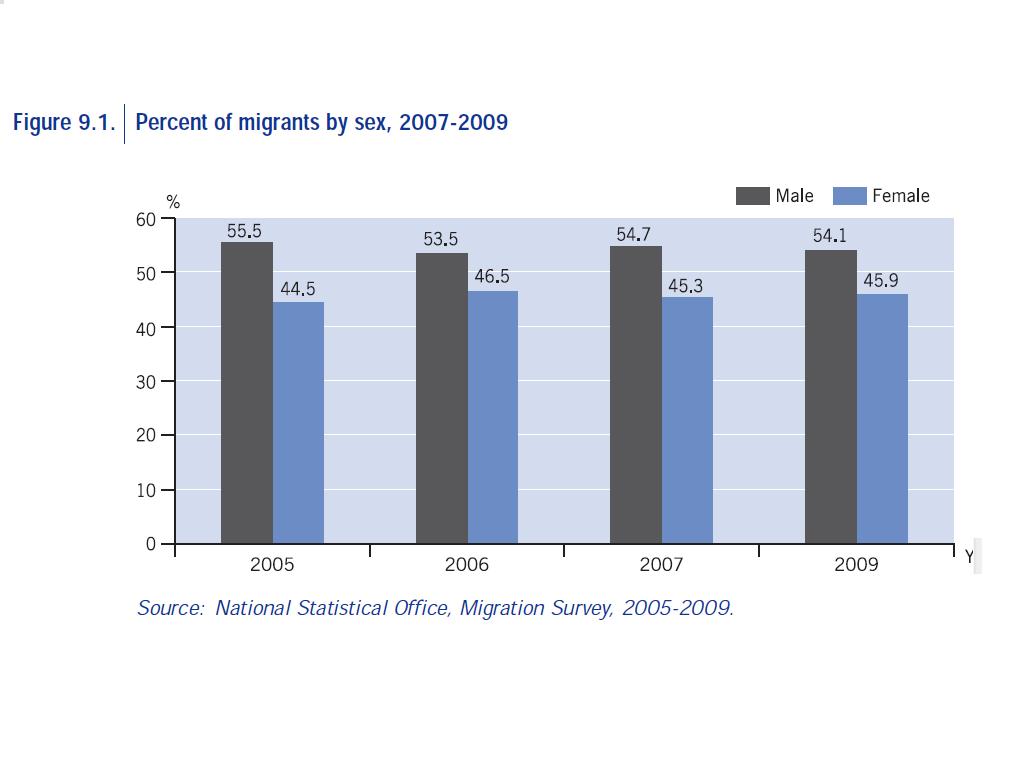 In Figure 9.2 we can see the sex ratio for different migration streams from <a href="https://challenges.openideo.com/challenge/bridgebuilder2/impact/9-cara-mengobati-ambeien-dengan-cepat-tanpa-operasi">2007</a>-<a href="https://challenges.openideo.com/challenge/bridgebuilder2/impact/tidak-ada-yang-menduga-ternyata-ini-gejala-awal-hiv">2009</a>. During this period, women tended to dominate the migration streams from rural to urban destinations while men were more prominent in urban to rural migration streams. For every 100 females who migrated from rural to urban areas or from urban to urban destinations, there were fewer than 100 male migrants engaged in this type of migration. The exception to this was the year 2008, when there were slightly more men moving from rural to urban areas. In Figure 9.2 we can see the sex ratio for different migration streams from <a href="https://challenges.openideo.com/challenge/bridgebuilder2/impact/9-cara-mengobati-ambeien-dengan-cepat-tanpa-operasi">2007</a>-<a href="https://challenges.openideo.com/challenge/bridgebuilder2/impact/tidak-ada-yang-menduga-ternyata-ini-gejala-awal-hiv">2009</a>. During this period, women tended to dominate the migration streams from rural to urban destinations while men were more prominent in urban to rural migration streams. For every 100 females who migrated from rural to urban areas or from urban to urban destinations, there were fewer than 100 male migrants engaged in this type of migration. The exception to this was the year 2008, when there were slightly more men moving from rural to urban areas. 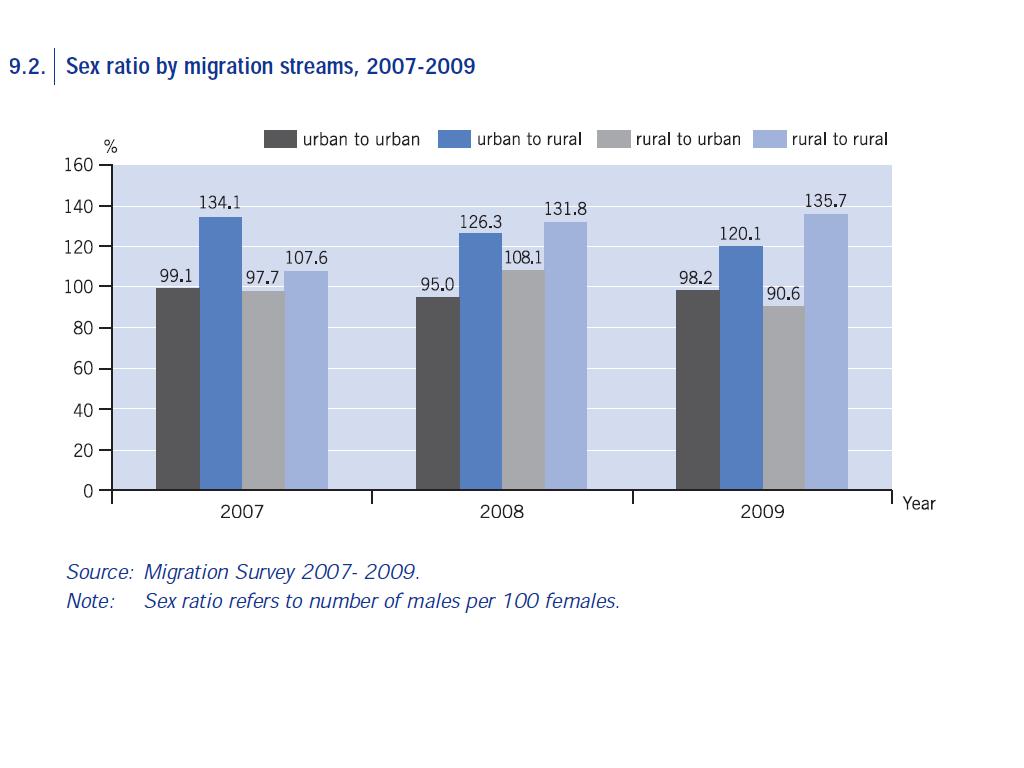 Figure 9.3 and 9.4 show that after 1970 there were more female migrants moving from rural areas to the capital city and the five peripheral provinces than male migrants. This is because Bangkok and its five peripheral provinces had a higher demand in the service and manufacturing industries, which required female labour rather than male. During the 1990s, the number of migrants moving to Bangkok decreased because the industrial opportunities expanded into the five peripheral provinces. Migrants chose to move to the five peripheral provinces as a way to to avoid living in the overcrowded Bangkok. Figure 9.3 and 9.4 show that after 1970 there were more female migrants moving from rural areas to the capital city and the five peripheral provinces than male migrants. This is because Bangkok and its five peripheral provinces had a higher demand in the service and manufacturing industries, which required female labour rather than male. During the 1990s, the number of migrants moving to Bangkok decreased because the industrial opportunities expanded into the five peripheral provinces. Migrants chose to move to the five peripheral provinces as a way to to avoid living in the overcrowded Bangkok. 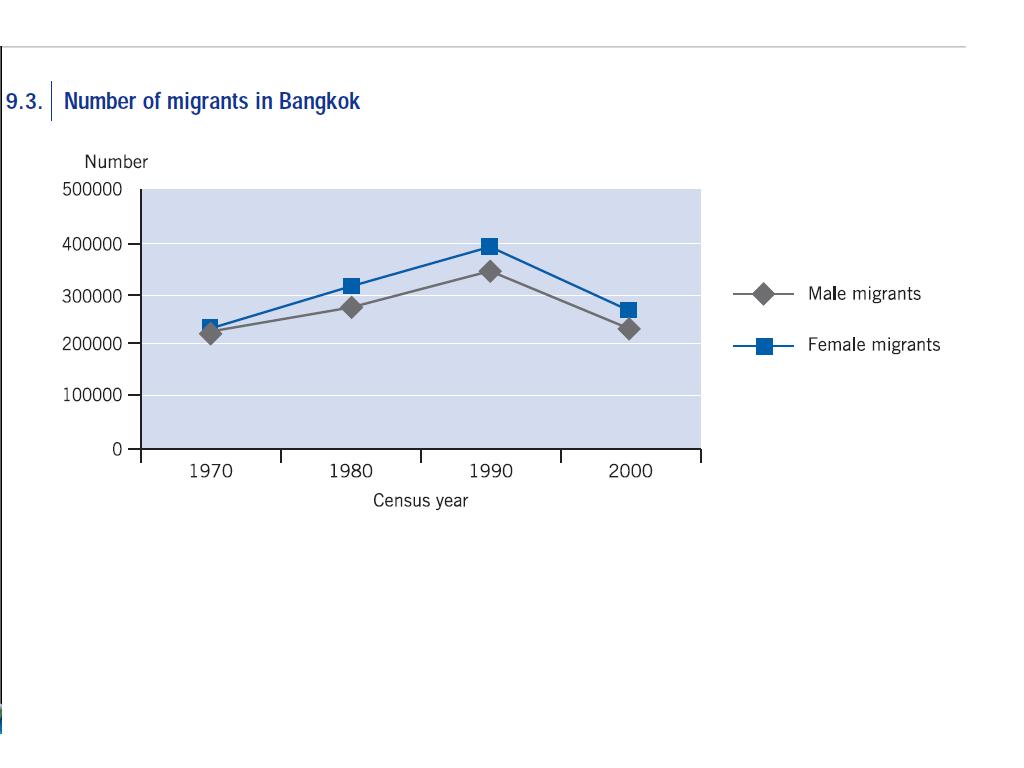 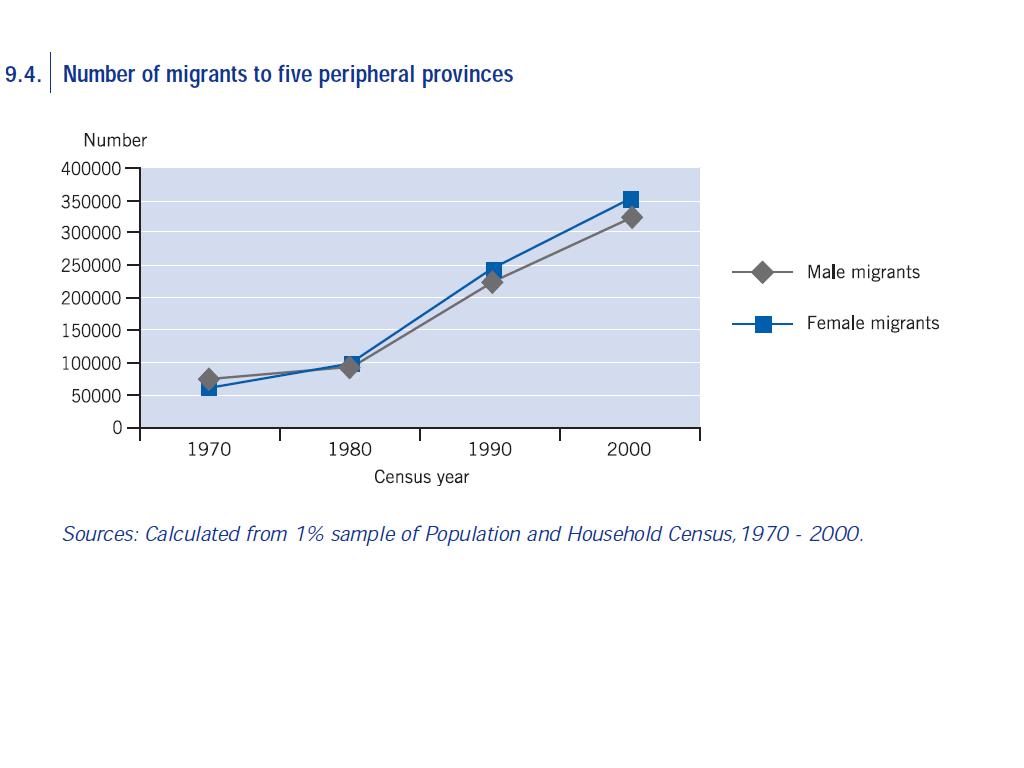 In table 9.3, we can observe the differences of male and female migration between two periods of time. Looking at female migration, we can see a decrease in women who work in agriculture and an increase in their work in industries. However, at the same time we can see a decrease in men’s involvement in the industry due to the increased proportion of women filling these jobs. Yet, we can see an increase in the amount of labourers from both sexes in the industry from 2005. In table 9.3, we can observe the differences of male and female migration between two periods of time. Looking at female migration, we can see a decrease in women who work in agriculture and an increase in their work in industries. However, at the same time we can see a decrease in men’s involvement in the industry due to the increased proportion of women filling these jobs. Yet, we can see an increase in the amount of labourers from both sexes in the industry from 2005. 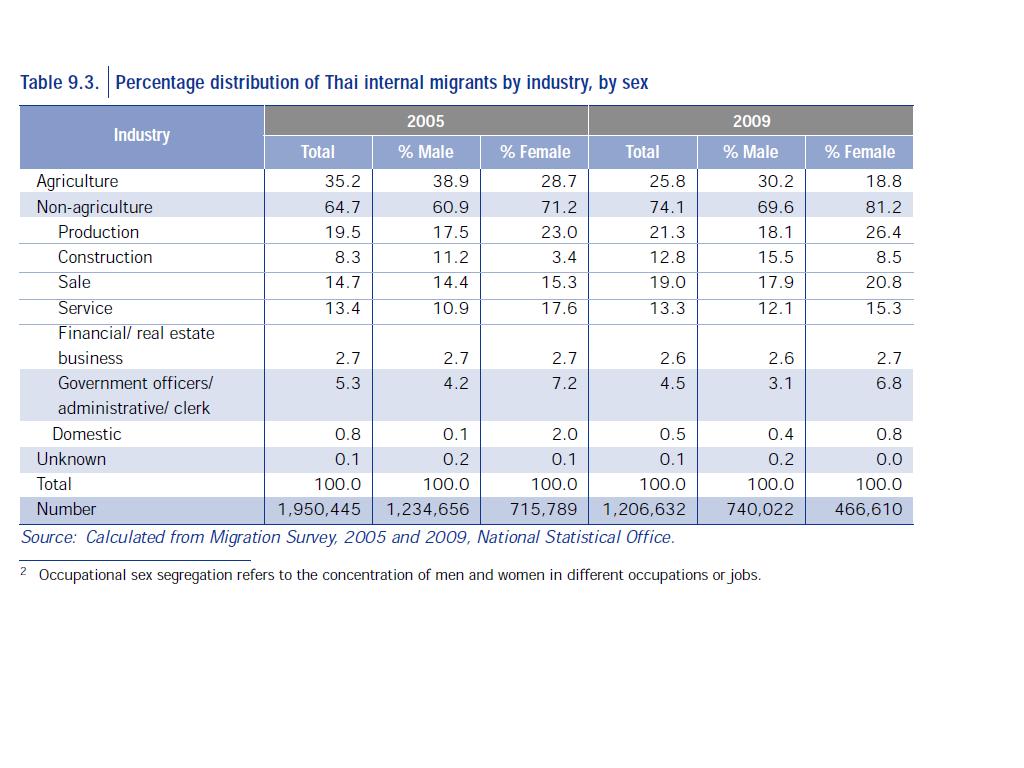 </p> </p><h2 id="w_international-immigrants-in-thailand">International immigrants in Thailand</h2> <p>International immigrants in Thailand are immigrants mainly from "Gender , the "Gender and "Gender . There is no way to accurately estimate all of the international migrants in Thailand due to irregularities in migration trends. As a result, we have chosen to focus on these main countries.http://www.un.or.th/documents/tmr-2011.pdf This data (table 9.4) shows the number of migrants who registered for work with the Ministry of Labour (MOL). Among the three countries, the majority of workers were from Myanmar. In 2010, Myanmar immigrants constituted 87 percent of the total registered migrants. The remaining migrants came either from Cambodia or the Lao People’s Democratic Republic in approximately equal numbers. It is most likely that the main reason that citizens of these countries immigrated to Thailand was due to wage gaps. Looking at economic differences by using GDP per capita we can see that the GDP per capita in Myanmar, Laos and Cambodia is only a fraction of that in Thailand. In 2009, the GDP per capita was USD 610 in Cambodia and USD 880 in the Lao People’s Democratic Republic. The figure for Myanmar was not available. Additionally, approximately one-third of the population in each of these countries is below the official poverty line. http://web.worldbank.org/WBSITE/EXTERNAL/EXTABOUTUS/EXTANNREP/EXTANNREP2011/0,,contentMDK:22969490~menuPK:8121330~pagePK:64168427~piPK:64168435~theSitePK:8070617,00.html <b>Table 9.4</b>Source: Thailand Migration Report 2011 – United Nations in Thailand  Table 9.5 shows the types of jobs migrants participate in. In 2011, the greatest number of immigrants were involved in agriculture; the second most common field of work was construction, and the third was seafood processing. Population mobility trends show that female migration is significantly increasing. This means that women have a strong impact on the migratory process. Men and women tend to migrate for different reasons and gender is perhaps one of the important factors shaping migrants’ motivations. <b>Table 9.5</b>Source: Thailand Migration Report 2011 – United Nations in Thailand Table 9.5 shows the types of jobs migrants participate in. In 2011, the greatest number of immigrants were involved in agriculture; the second most common field of work was construction, and the third was seafood processing. Population mobility trends show that female migration is significantly increasing. This means that women have a strong impact on the migratory process. Men and women tend to migrate for different reasons and gender is perhaps one of the important factors shaping migrants’ motivations. <b>Table 9.5</b>Source: Thailand Migration Report 2011 – United Nations in Thailand  </p> </p><h2 id="w_conclusion">Conclusion</h2> <p>Population mobility trends in Thailand, similar to those of other countries, show that female migration is increasing in significance. These evidences suggest that this trend is partly due to gender dynamics, which have a strong impact on the migratory process as they play an important role in an individual’s decision to migrate. Men and women tend to migrate for different reasons and use different channels, and gender is perhaps the most important factor shaping the migrants’ experiences.</p> <h2 id="w_see-also">See also</h2> <ul> <li>"Female</li> </ul> <h2 id="w_references">References</h2> <p> </p> <h2 id="w_group-4">Group 4</h2> <p> 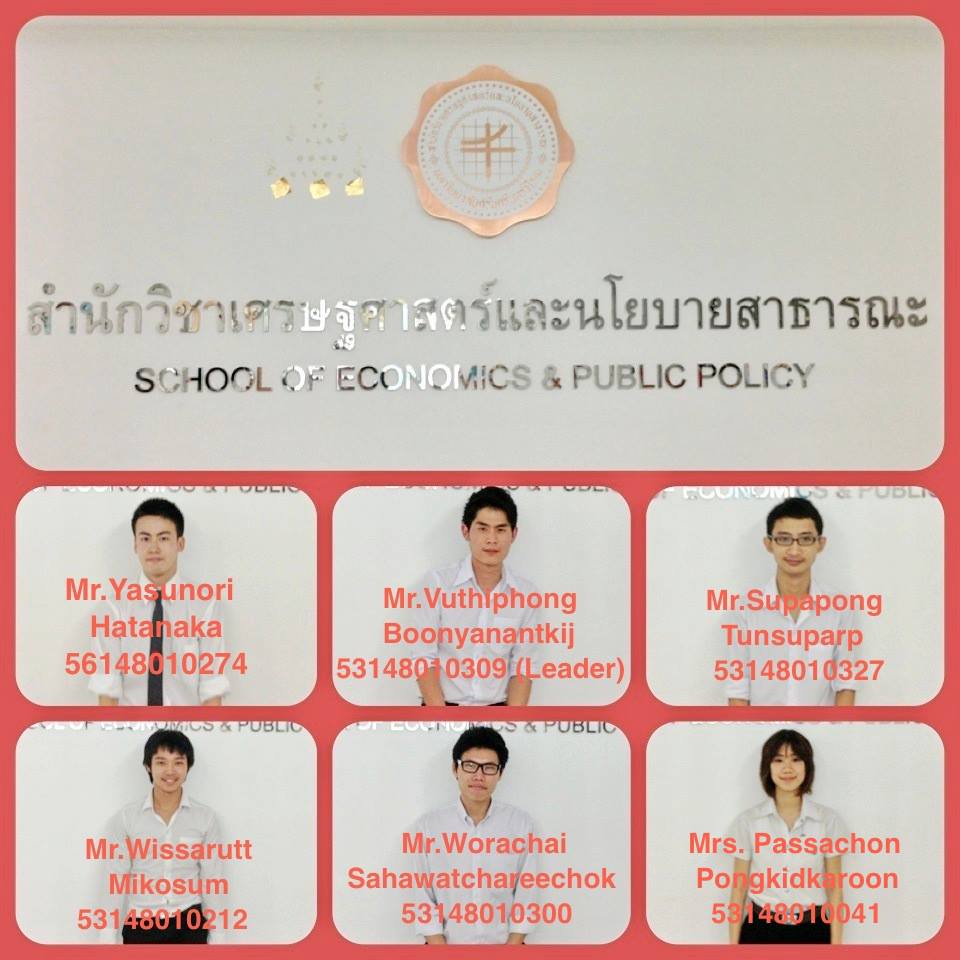 </p> </p> |


